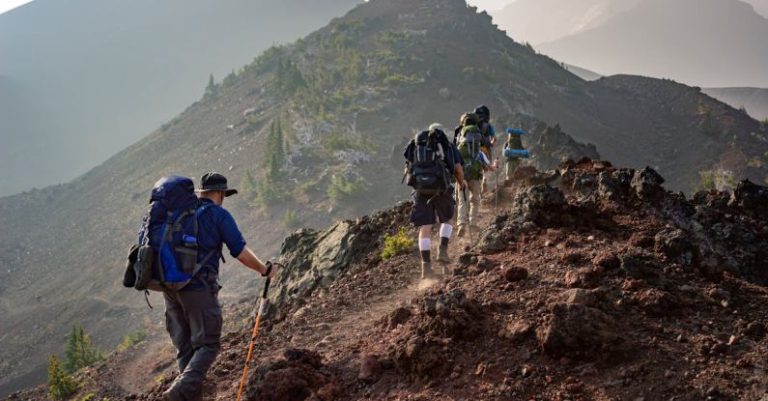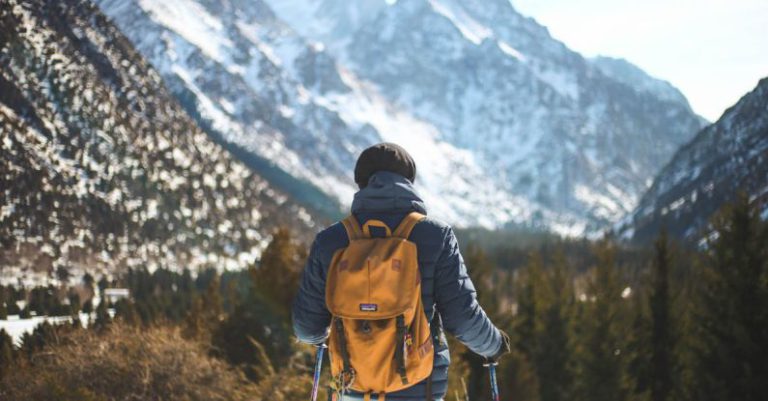
Hiking is a fantastic way to connect with nature, stay active, and explore the great outdoors. However, it’s essential to remember that even these seemingly eco-friendly activities can have an impact on the environment. From leaving behind trash to trampling on delicate vegetation, hikers can unintentionally harm the very landscapes they admire. To minimize your environmental footprint while hiking, follow these tips and make a positive difference in preserving nature for future generations.
Choose Sustainable Gear
Selecting sustainable gear is the first step in reducing your environmental impact while hiking. Opt for items made from eco-friendly materials such as recycled polyester, organic cotton, or hemp. Look for gear that is durable and long-lasting to minimize waste. Additionally, consider purchasing second-hand equipment or renting gear when possible to reduce the demand for new products.
Pack Light and Smart
When preparing for a hike, pack only the essentials to reduce the weight of your backpack. The lighter your load, the less energy you will consume, resulting in a smaller carbon footprint. Choose reusable containers for food and drinks instead of single-use plastics. Bring a refillable water bottle and a lightweight, collapsible cup for hot beverages to minimize waste along the trail.
Stay on Designated Trails
One of the most critical ways to protect the environment while hiking is to stay on designated trails. Venturing off-trail can lead to erosion, damage to plant life, and disruption of wildlife habitats. By sticking to established paths, you help preserve the natural landscape and minimize your impact on fragile ecosystems. Follow trail markers and signs to ensure you are treading lightly on the environment.
Practice Leave No Trace Principles
Adhering to Leave No Trace principles is essential for minimizing your environmental impact while hiking. Pack out all trash, including food scraps, wrappers, and biodegradable items like fruit peels. Avoid picking plants or disturbing wildlife, and refrain from feeding animals you encounter on the trail. Leave natural objects and cultural artifacts untouched for others to enjoy. By practicing Leave No Trace, you contribute to the conservation of wilderness areas and promote responsible outdoor recreation.
Respect Wildlife
Respecting wildlife is crucial when hiking in natural areas. Observe animals from a safe distance and never approach or feed them. Keep pets on a leash to prevent them from disturbing wildlife or spreading invasive species. Be mindful of nesting birds and sensitive habitats, and avoid making loud noises that could frighten or stress animals. By showing respect for wildlife, you help maintain the balance of ecosystems and protect the creatures that call these environments home.
Support Conservation Efforts
Consider giving back to the places you love to hike by supporting conservation organizations and volunteer programs. Donate to local land trusts or environmental groups that work to protect natural areas and wildlife habitats. Participate in trail maintenance projects or clean-up events to help preserve the beauty of hiking destinations for future generations. By actively contributing to conservation efforts, you play a part in safeguarding the environment for years to come.
Embrace Sustainable Practices
Incorporating sustainable practices into your hiking routine can make a significant difference in reducing your environmental impact. Use eco-friendly sunscreen and insect repellent to protect yourself without harming aquatic life or soil health. Choose biodegradable soap for washing dishes and bathing outdoors to minimize water pollution. Practice energy conservation by using solar-powered chargers for electronics or opting for rechargeable batteries. By embracing sustainable practices, you can enjoy hiking while minimizing your ecological footprint.
Promote Environmental Awareness
Spread awareness about the importance of environmental stewardship among fellow hikers and outdoor enthusiasts. Share information about Leave No Trace principles, sustainable gear options, and conservation initiatives to inspire others to make positive changes. Lead by example by demonstrating responsible hiking practices and advocating for the protection of natural spaces. By promoting environmental awareness within your hiking community, you can help create a culture of conservation and respect for the environment.
Make a Difference with Every Step
Every step you take while hiking has the potential to make a difference in preserving the natural world. By incorporating these tips into your outdoor adventures, you can reduce your environmental impact and contribute to the conservation of wilderness areas. Remember that small actions add up to significant changes, and each choice you make can have a positive impact on the environment. Embrace a mindset of stewardship and responsibility while hiking, and enjoy the beauty of nature while leaving only footprints behind.





